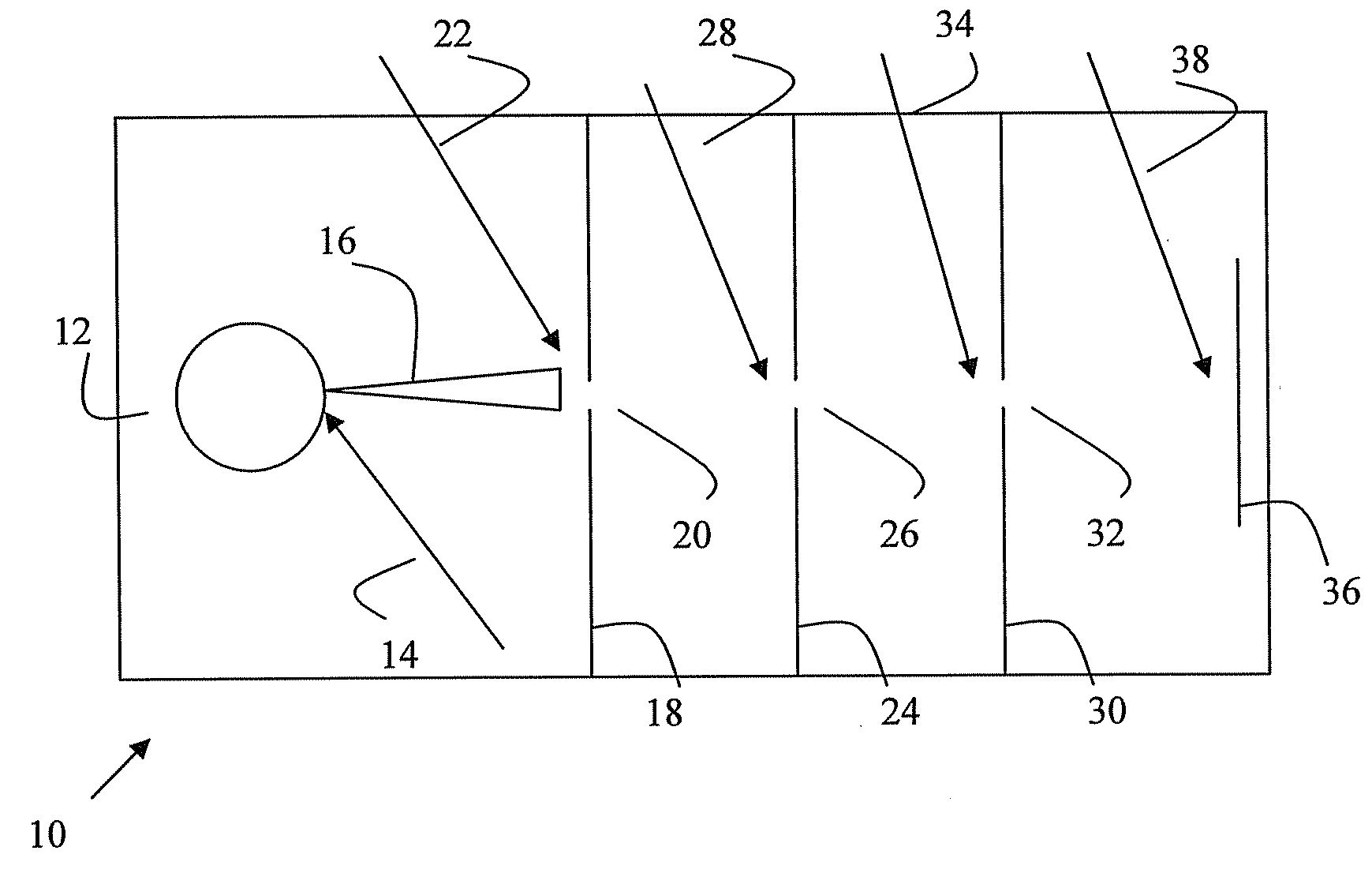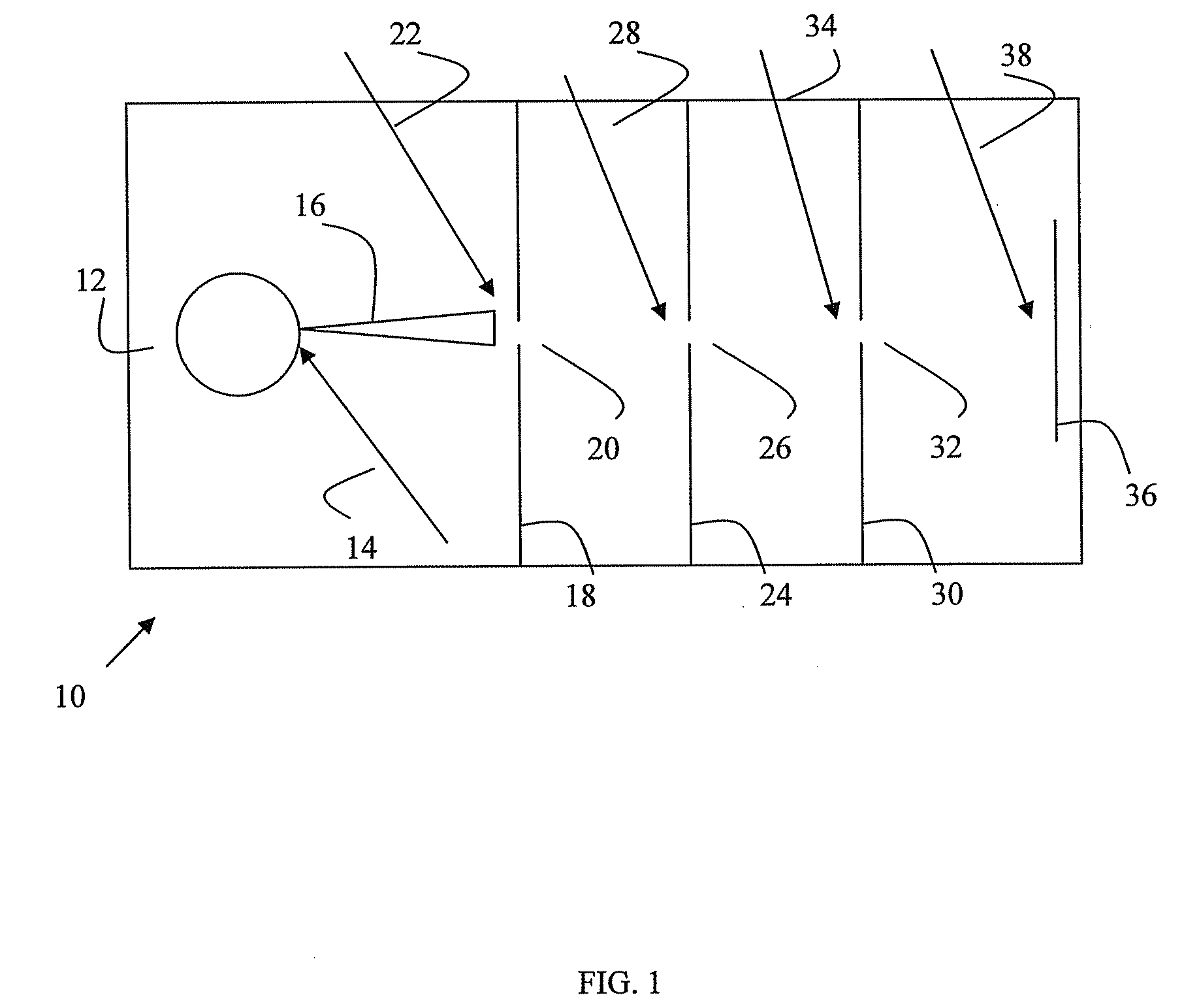Method and apparatus for high-pressure atomic-beam laser induced deposition/etching
a laser induced deposition and high-pressure technology, applied in the field of atomic, molecular and nanoparticle deposition techniques, can solve the problems of limiting the deposition rate and quality of deposits, causing more recombination events, and causing spall
- Summary
- Abstract
- Description
- Claims
- Application Information
AI Technical Summary
Benefits of technology
Problems solved by technology
Method used
Image
Examples
Embodiment Construction
[0010]Using a focused short-pulse laser beam (i.e., less than about 1 fs to more than about 100 ps), a very high-temperature plasma is created at an aperture through which chemical precursors are flowing. While the chemical precursors are usually gases, they may also be liquids or super-critical fluids). These chemical precursors would typically be Chemical vapor deposition precursors or etchants, e.g. methane, trimethylamine alane, silane, chlorine, etc. Reactive gases, e.g. hydrogen or nitrogen, or inert carrier gases, such as Argon or Krypton may also be used. Adjacent to the aperture, a target comprised of a desired deposition material is placed such that a portion of the short-pulse beam is focused on the target and a plume of target material enters the flow of precursor / reactive / inert gases. Alternatively, nanoparticles of desired deposit material can be created through homogeneous nucleation using a laser beam in a separate chamber (e.g. through photolysis) and carried by the...
PUM
| Property | Measurement | Unit |
|---|---|---|
| electrical potential | aaaaa | aaaaa |
| time | aaaaa | aaaaa |
| magnetic field | aaaaa | aaaaa |
Abstract
Description
Claims
Application Information
 Login to View More
Login to View More - R&D
- Intellectual Property
- Life Sciences
- Materials
- Tech Scout
- Unparalleled Data Quality
- Higher Quality Content
- 60% Fewer Hallucinations
Browse by: Latest US Patents, China's latest patents, Technical Efficacy Thesaurus, Application Domain, Technology Topic, Popular Technical Reports.
© 2025 PatSnap. All rights reserved.Legal|Privacy policy|Modern Slavery Act Transparency Statement|Sitemap|About US| Contact US: help@patsnap.com


